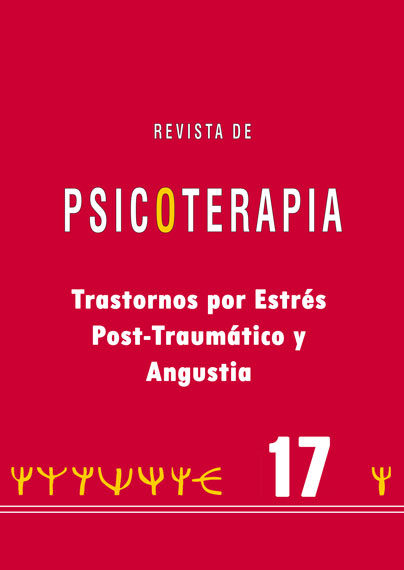Tratamiento de clientes con trastornos de estres post-traumatico: un enfoque cognitivo-conductual
DOI:
https://doi.org/10.33898/rdp.v5i17.1056Palabras clave:
tratamiento en estrés post traumático, estrés post traumático, técnicas de reestructuración cognitiva en estrés post traumáticoResumen
En este artículo se detalla un modelo de intervención terapéutica para el tratamiento de clientes con trastornos de estrés post-tramáutico que se presenta como consecuencia de situaciones traumáticas debidas a desastres naturales o de ejecución humana intencional. En él se consideran los diversos tipos de acontecimientos traumáticos, las respuestas más habituales a esta clase de acontecimientos, las distintas alteraciones asociadas a ellos y las estrategias y técnicas de reestructuración cognitiva a seguir en estos casos, tanto en el tratamiento individual como de grupo.
Descargas
Descargas
Publicado
Cómo citar
Número
Sección
Licencia
Los autores/as que publiquen en esta revista aceptan las siguientes condiciones:
- Los autores/as conservan los derechos de autor y ceden a la revista el derecho de la primera publicación, con el trabajo registrado con la Creative Commons CC-BY-NC 4.0 Internacional, que permite a terceros citar el texto y usarlo sin alterarlo y sin beneficio económico, siempre que mencionen la autoría del trabajo y la primera publicación en esta revista.
- Los autores/as pueden realizar otros acuerdos contractuales independientes y adicionales para la distribución no exclusiva de la versión del artículo publicado en esta revista (p. ej., incluirlo en un repositorio institucional o publicarlo en un libro), siempre que indiquen claramente que el trabajo se publicó por primera vez en esta revista.
- Las opiniones expresadas en los trabajos son responsabilidad única de los/as autores/as, no reflejando en ningún caso las opiniones o políticas científicas de la revista.








